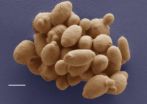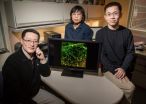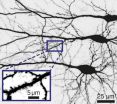(Press-News.org) Researchers from the National Collection of Yeast Cultures (NCYC) at the Institute of Food Research (IFR) have identified a new globe-trotting yeast species that lives on tree-associated beetles. This new species demonstrates the importance of preserving biodiversity, as yeasts like this may help efforts to develop renewable fuel sources in the future.
Preserving biodiversity must go beyond plants and animals and also preserve the microbial life. Threats to habitats, for example through oil exploration, could destroy forever potential solutions to global challenges locked up in the microbial life itself. Yeasts, well known for their role in brewing beer and baking bread, can also ferment sugars from plant material into biofuels. However, this process isn't very efficient, especially when waste plant matter is used, as the structures are tough to break down.
Different yeasts use different types of sugars, thrive in different conditions and produce a diverse range of different products. Crossing strains with just the right mix of characteristics could produce a yeast that's perfect for biofuel production. The announcement of the production of the first artificial yeast chromosome demonstrates how using synthetic biology gives us an opportunity to design a new yeast with these characteristics. But identifying these relies on studying and preserving yeast biodiversity.
In an effort to address this issue, NCYC, which is based at IFR on the Norwich Research Park, has recently initiated a programme to screen its 4000+ different yeast strains to find the biofuel-producing stars. But it wants more.
"We're looking for interesting yeasts from interesting habitats," said Dr Steve James.
The search for yeast biodiversity spans the globe, and has just yielded an entirely new species. Wickerhamomyces arborarius was first discovered on a flower growing in the high altitude Maquipucuna cloud forest in north-west Ecuador. It's the latest in a long standing collaboration between NCYC and the Colección de Levaduras Quito Católica (CLQCA) in Ecuador. The Ecuadorian team, led by Dr Javier Carvajal, has been scouring unique and sensitive habitats such as the cloud forests, the Amazon rainforest, the Andean highlands as well as the Galápagos Islands in search of novel yeasts, which NCYC then characterises and preserves.
With funding from the Biotechnology and Biological Sciences Research Council (BBSRC), NCYC have been characterising this yeast. Genomic analysis of the Ecuadorean yeast revealed it had no known matches. But over time, other yeast hunters found similar strains of the Ecuadorean species. One was found on a nutgall tree in a remote mountainous region of Taiwan by Dr Ching-Fu Lee of the National Hsinchu University of Education. Three other strains were identified from wood-boring beetles living on laurel trees in Georgia, USA, by Dr Thomas Harrington from Iowa State University, whose research team were investigating how these beetles transmit a fungal pathogen known to cause laurel wilt disease.
"This new species is a real globetrotter," said Dr James. "It's possible the yeast originated in Asia, and was subsequently brought to the USA by these insects. Although this beetle has yet to be found in Ecuador, three other very similar species have recently been found there, so it's possible that the yeast got to South America via the beetles too."
Interestingly, one of the US strains was isolated from a beetle that had been surface sterilised, potentially indicating that this yeast species actually lives inside the insect, in its gut. This isn't unusual, as like us, insects host gut flora - bacteria and yeasts that help them digest their food. These particular beetles eat wood, and rely on their microbial gut flora to help digest its tough structure. The same structure is found in the sorts of waste plant materials that could be suitable sources of biofuels if only more efficient ways of realising their potential were available. If this yeast is indeed a gut symbiont of the beetles, it should also be resistant to some of the breakdown products from wood digestion that can inhibit other biofuel-producing yeasts.
The NCYC team are now fully characterising this new species, and plan to test what characteristics might be useful for the production of biotechnological applications.
"We're really interested in finding out how this yeast evolved tolerance to rotting wood environments, to guide attempts to improve production yeasts," said Dr Ian Roberts, curator of the NCYC. "It's just the sort of characteristic you'd put into a designer yeast for biofuel production."
In testing and characterising yeast, he and his team work closely with Professor Keith Waldron and his colleagues in The Biorefinery Centre at the Institute of Food Research, which is strategically funded by the Biotechnology and Biological Sciences Research Council.
But their search for more yeasts to add to their collection continues. Conservative estimates put the current total number of yeast species at 150,000, and so far globally we've possibly discovered only 1% of this total. NCYC's Ecuadorean collaboration has yielded dozens of new, as yet uncharacterised yeasts, and more extreme environments and habitats are currently being explored for the chance to find potentially useful yeasts. But unless we preserve those habitats, and the precious biodiversity they contain, we could lose that chance forever.
INFORMATION: END
New yeast species travelled the globe with a little help from the beetles
Yeasts may help develop renewable fuels and show the enormous value of preserving biodiversity
2014-04-01
ELSE PRESS RELEASES FROM THIS DATE:
Simple changes in ICU can help heart attack patients: Study
2014-04-01
To improve recovery for heart attack patients, hospitals should maintain normal day and night cycles for those patients during the first few days after the attack, say University of Guelph researchers.
Their new study shows for the first time that interrupting diurnal rhythms impairs healing immediately after a heart attack, said Prof. Tami Martino of the Department of Biomedical Sciences.
Researchers already knew that circadian rhythms, or day-night cycles, can affect timing of a heart attack. This is the first study to show the importance of circadian rhythms during ...
Dog watch
2014-04-01
Dogs are individual personalities, possess awareness, and are particularly known for their learning capabilities, or trainability. To learn successfully, they must display a sufficient quantity of attention and concentration. However, the attentiveness of dogs' changes in the course of their lives, as it does in humans. The lead author Lisa Wallis and her colleagues investigated 145 Border Collies aged 6 months to 14 years in the Clever Dog Lab at the Vetmeduni Vienna and determined, for the first time, how attentiveness changes in the entire course of a dog's life using ...
Experts demand lead ammunition be replaced by steel in shooting sports
2014-04-01
Raimon Guitart, lecturer in Toxicology at the UAB, and Vernon Thomas, emeritus professor of the University of Guelph, analysed in detail the environmental effects of using lead ammunition in shooting sports, in an article published in the AMBIO journal. Although the number of Olympic athletes specialising in these sports is reduced, and the ammunition is recovered and recycled after the competitions, there are many amateurs who practice this sport around the world, making it almost impossible to recover the ammunition after being used.
Researchers show that for these ...
Carbon nanotubes grow in combustion flames
2014-04-01
Nagoya, Japan – Professor Stephan Irle of the Institute of Transformative Bio-Molecules (WPI-ITbM) at Nagoya University and co-workers at Kyoto University, Oak Ridge National Lab (ORNL), and Chinese research institutions have revealed through theoretical simulations that the molecular mechanism of carbon nanotube (CNT) growth and hydrocarbon combustion actually share many similarities. In studies using acetylene molecules (ethyne; C2H2, a molecule containing a triple bond between two carbon atoms) as feedstock, the ethynyl radical (C2H), a highly reactive molecular intermediate ...
Early intervention reduces aggressive behavior in adulthood
2014-04-01
An educational intervention program for children between kindergarten and 10th grade, known as Fast Track, reduces aggressive behavior later in life, according to research published in Psychological Science, a journal of the Association for Psychological Science.
The research, led by psychological scientist Justin Carré of Nipissing University in Ontario, Canada, indicates that dampened testosterone levels in response to social threats may account for the intervention's success in reducing aggression.
The Fast Track intervention program teaches children social cognitive ...
Team finds a better way to grow motor neurons from stem cells
2014-04-01
CHAMPAIGN, Ill. — Researchers report they can generate human motor neurons from stem cells much more quickly and efficiently than previous methods allowed. The finding, described in Nature Communications, will aid efforts to model human motor neuron development, and to understand and treat spinal cord injuries and motor neuron diseases such as amyotrophic lateral sclerosis (ALS).
The new method involves adding critical signaling molecules to precursor cells a few days earlier than previous methods specified. This increases the proportion of healthy motor neurons derived ...
Science: Switching brain cells with less light
2014-04-01
This news release is available in German. Networked nerve cells are the control center of organisms. In a nematode, 300 nerve cells are sufficient to initiate complex behavior. To understand the properties of the networks, re-searchers switch cells on and off with light and observe the resulting behavior of the organism. In the Science journal, sci-entists now present a protein that facilitates the control of nerve cells by light. It might be used as a basis of studies of diseases of the nervous system. DOI: 10.1126/science.1249375
To switch a nerve cell with light, ...
Gratitude, not 'gimme,' makes for more satisfaction, Baylor University study finds
2014-04-01
People who are materialistic are more likely to be depressed and unsatisfied, in part because they find it harder to be grateful for what they have, according to a study by Baylor researchers.
The study — "Why are materialists less happy? The role of gratitude and need satisfaction in the relationship between materialism and life satisfaction" — appears in the journal Personality and Individual Differences.
"Gratitude is a positive mood. It's about other people," said study lead author Jo-Ann Tsang, Ph.D., associate professor of psychology and neuroscience in Baylor's ...
Clinical trial results inconsistently reported among journals, government website
2014-04-01
PORTLAND, Ore. — Medical researchers often presented the findings of their clinical trials in a different way on a federal government website than they did in the medical journals where their studies were ultimately published, according to an Oregon Health & Science University analysis published April 1 in the Annals of Internal Medicine.
Researchers' reports in peer-reviewed medical journals often were more favorable to the drug or intervention being studied than the reports on the government website — ClinicalTrials.gov — which required data for specific categories, ...
Sobering update on Jamaica's largest vertebrate
2014-04-01
In 1990, the Jamaican iguana was removed from the list of extinct species when a small population was re-discovered on the island. Unfortunately, the species continues to be critically endangered, with only a single location left for the recovering population, now greater than 200 individuals, in a protected area called the Hellshire Hills, part of the Portland Bight Protected Area. A recent proposal by Jamaican government officials to allow extensive development in this area is causing concern among conservationists who have been working to save this species and the wealth ...
LAST 30 PRESS RELEASES:
Why nail-biting, procrastination and other self-sabotaging behaviors are rooted in survival instincts
Regional variations in mechanical properties of porcine leptomeninges
Artificial empathy in therapy and healthcare: advancements in interpersonal interaction technologies
Why some brains switch gears more efficiently than others
UVA’s Jundong Li wins ICDM’S 2025 Tao Li Award for data mining, machine learning
UVA’s low-power, high-performance computer power player Mircea Stan earns National Academy of Inventors fellowship
Not playing by the rules: USU researcher explores filamentous algae dynamics in rivers
Do our body clocks influence our risk of dementia?
Anthropologists offer new evidence of bipedalism in long-debated fossil discovery
Safer receipt paper from wood
Dosage-sensitive genes suggest no whole-genome duplications in ancestral angiosperm
First ancient human herpesvirus genomes document their deep history with humans
Why Some Bacteria Survive Antibiotics and How to Stop Them - New study reveals that bacteria can survive antibiotic treatment through two fundamentally different “shutdown modes”
UCLA study links scar healing to dangerous placenta condition
CHANGE-seq-BE finds off-target changes in the genome from base editors
The Journal of Nuclear Medicine Ahead-of-Print Tip Sheet: January 2, 2026
Delayed or absent first dose of measles, mumps, and rubella vaccination
Trends in US preterm birth rates by household income and race and ethnicity
Study identifies potential biomarker linked to progression and brain inflammation in multiple sclerosis
Many mothers in Norway do not show up for postnatal check-ups
Researchers want to find out why quick clay is so unstable
Superradiant spins show teamwork at the quantum scale
Cleveland Clinic Research links tumor bacteria to immunotherapy resistance in head and neck cancer
First Editorial of 2026: Resisting AI slop
Joint ground- and space-based observations reveal Saturn-mass rogue planet
Inheritable genetic variant offers protection against blood cancer risk and progression
Pigs settled Pacific islands alongside early human voyagers
A Coral reef’s daily pulse reshapes microbes in surrounding waters
EAST Tokamak experiments exceed plasma density limit, offering new approach to fusion ignition
Groundbreaking discovery reveals Africa’s oldest cremation pyre and complex ritual practices
[Press-News.org] New yeast species travelled the globe with a little help from the beetlesYeasts may help develop renewable fuels and show the enormous value of preserving biodiversity





